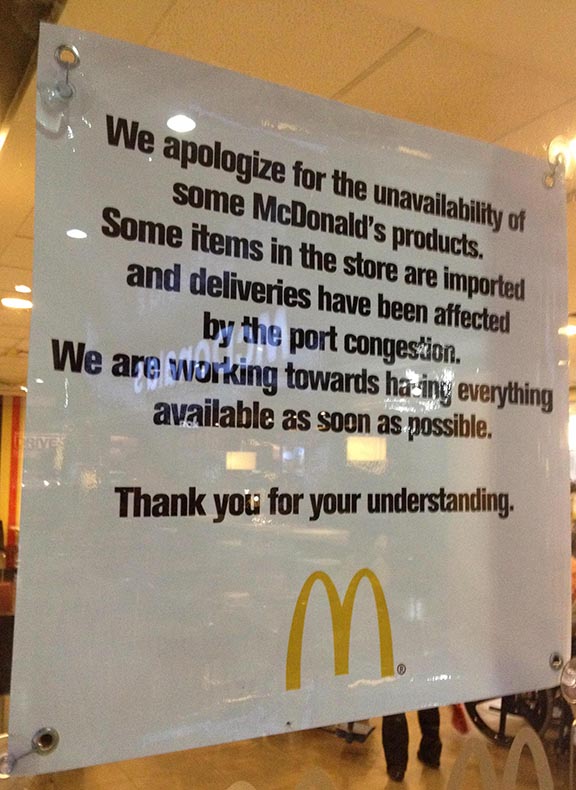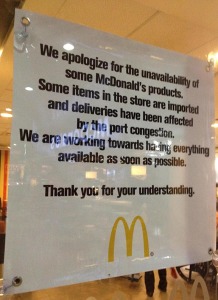

The Philippine economy grew 5.3% in the third quarter of 2014, its slowest in almost three years, weighed down by port congestion, a decline in agricultural output, and reduced public spending linked to the recent Supreme Court ruling on the controversial Disbursement Acceleration Program (DAP).
The Philippine Statistics Authority (PSA) said the third-quarter gross domestic product, which measures the country’s total value of goods and services, is the lowest since the 3.7% recorded in the fourth quarter of 2011.
It is also lower than the 7% posted in the third quarter of 2013, 5.7% of the first quarter of 2014, and 6.4% of the second quarter of this year.
Still, the country remains one of the fastest growing in the region, ranked fourth after China (7.3%), Vietnam (6.19%), and Malaysia (5.6%), according to Socioeconomic Planning Secretary Arsenio Balisacan.
To at least reach the 6% GDP target for the year, the economy must grow 8.2% in the fourth quarter, which is “a big challenge,” according to Balisacan,
Growth in production was mainly contributed by manufacturing (1.6%); trade (1.1%); real estate, renting and business activities (0.7%); and construction (0.7%). Deceleration in sub-sectors such as financial intermediation and the contractions in agriculture and public administration tempered this growth.
On the demand side, growth was fuelled by net exports (2.1%), private construction (1.1%), and food and non-alcoholic beverages (1%), countered by a contraction in government consumption and a public construction slowdown.
Balisacan said the third-quarter economic performance showed a mixed picture of the private sector treading a more stable upward trajectory, government adjusting to new spending protocols, and the negative impact of typhoon Yolanda and other calamities continuing to linger.
Congestion in the Port of Manila following the truck ban implemented by the City of Manila from late February to mid-September was seen to drag down the economy in the third quarter.
“Port congestion could have possibly affected the growth of exports and imports. There is sufficient evidence as well as anecdotal evidence for that,” Balisacan said.
Exports in the third quarter slowed to 9.8% from double-digit increases in the same period last year and the preceding quarter. Imports in June-September 2014, on the other hand, rose 5.8%, lower than the 17.3% growth recorded in the same period of 2013.
PSA data showed that the increase in household consumption dropped to 5.2% in the third quarter of the year from 5.7% in the second quarter of 2014 and 6.2% in the third quarter of last year.
“The port congestion problem affected prices and consumption. It’s all interrelated,” Balisacan said.
Meanwhile, output of the agriculture sector decreased 2.7% in the third quarter, reversing the positive gains made last year and during the previous quarter.
PSA said the decline was “largely due to the dismal performance of palay, forestry and corn.”
Government spending likewise declined 2.6% year-on-year for the third quarter from flat growth in the second quarter and a 7% expansion in disbursements between July and September last year.
Balisacan admitted that the Supreme Court decision on the DAP had “chilling effects” on government spending, noting that many agencies were more careful with their disbursements under the more watchful eye of the Commission on Audit.
Going forward, Balisacan said the government still sees a “brighter prospect” for the country’s economy.
“We expect the private sector to maintain a robust performance; government will have adjusted to the new protocols and we see this in the most recent, though preliminary, data coming from DBM (Department of Budget and Management),” Balisacan said, adding that the reconstruction assistance in the Yolanda-affected areas is already gaining traction.
The official said that government is also taking stock of the lesson for agencies to be adequately prepared and capacitated to comply with new protocols and, more importantly, “to improve our resilience against disasters—through better preparedness, through adaptation, through adequate social protection and through having a faster response mechanism.” – Roumina Pablo




